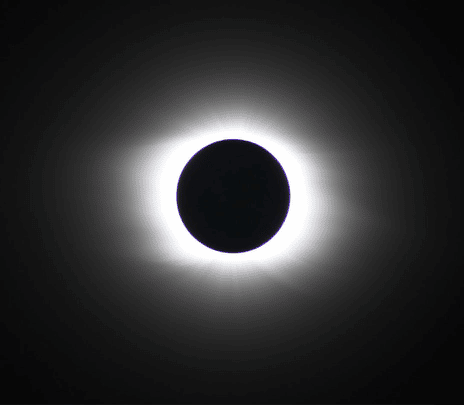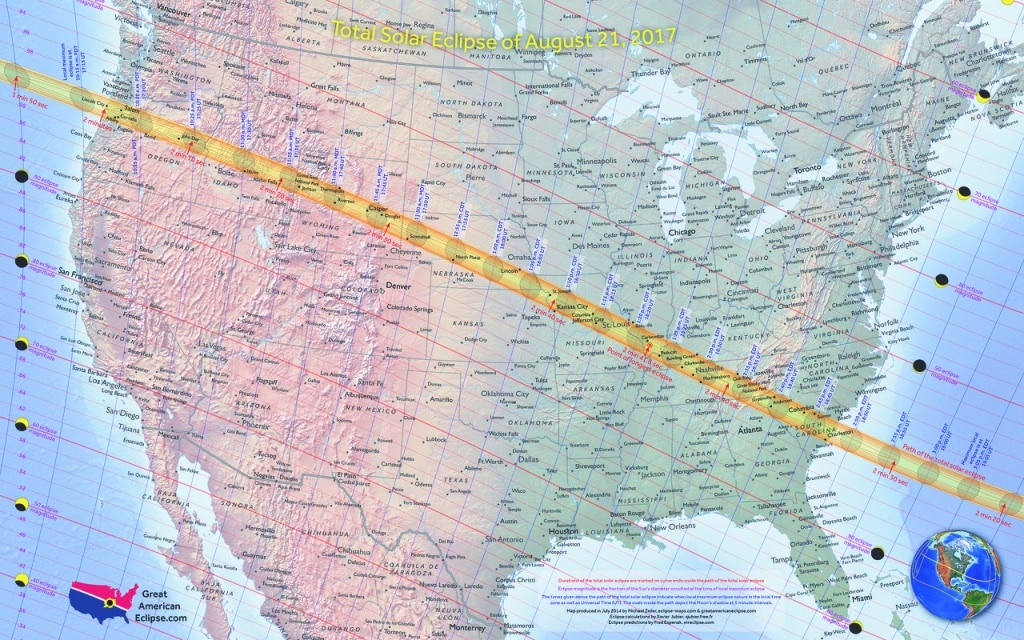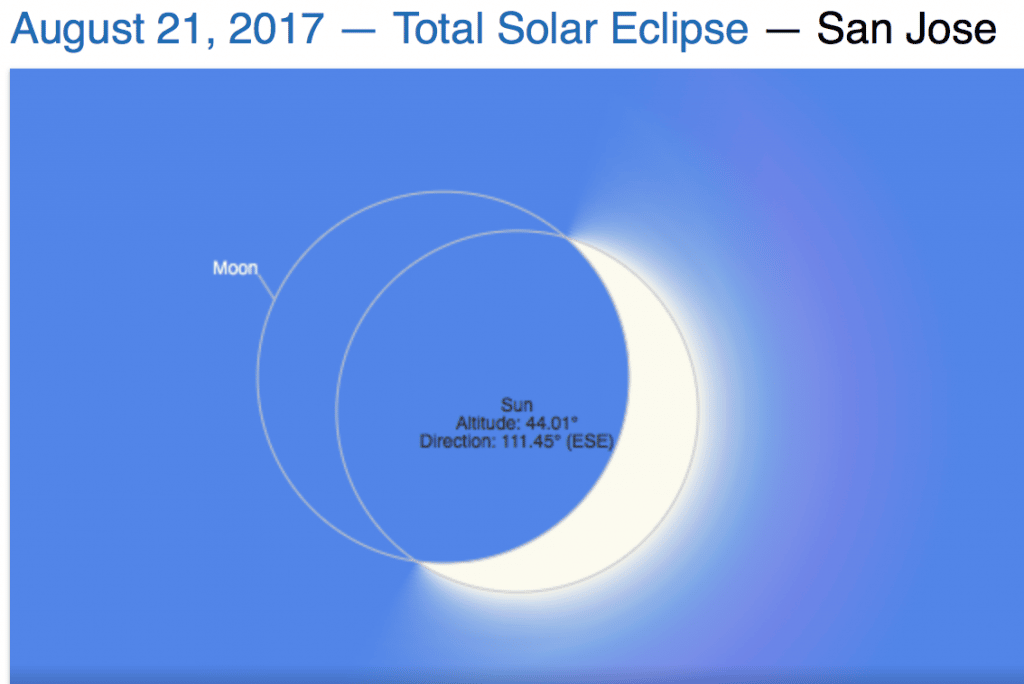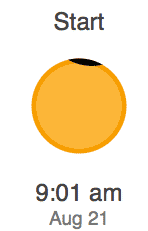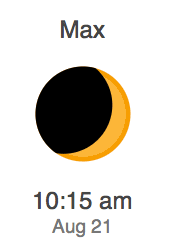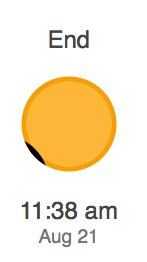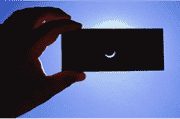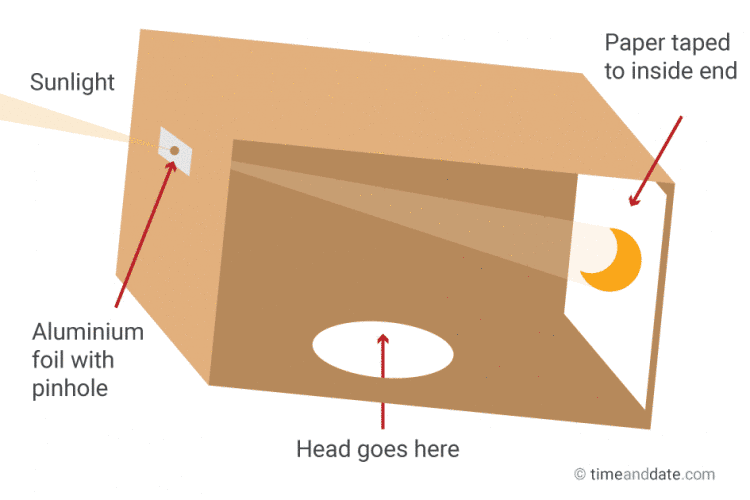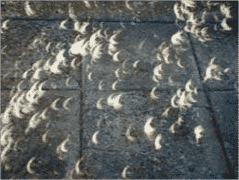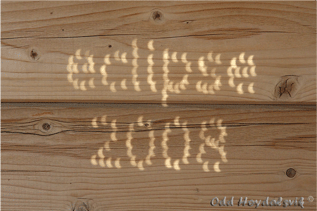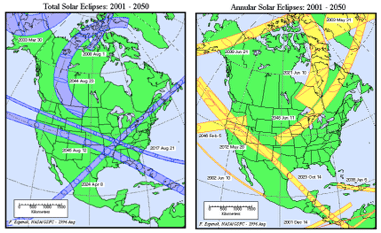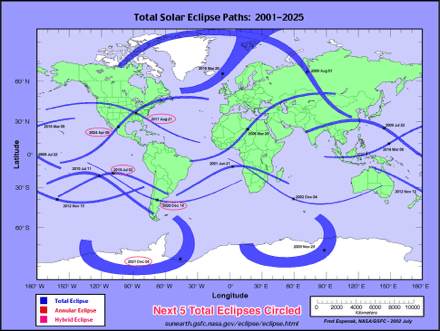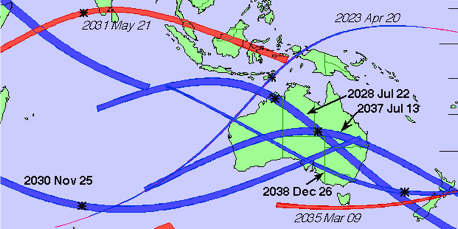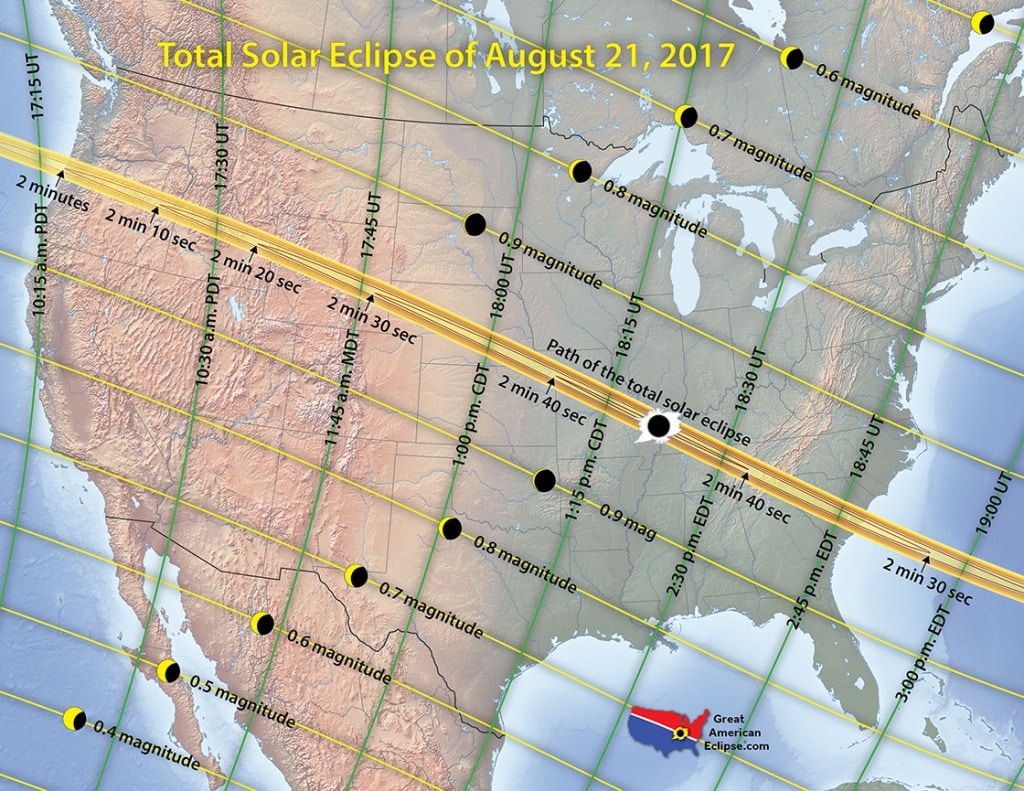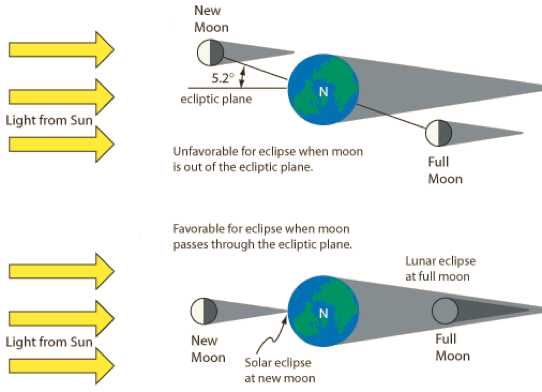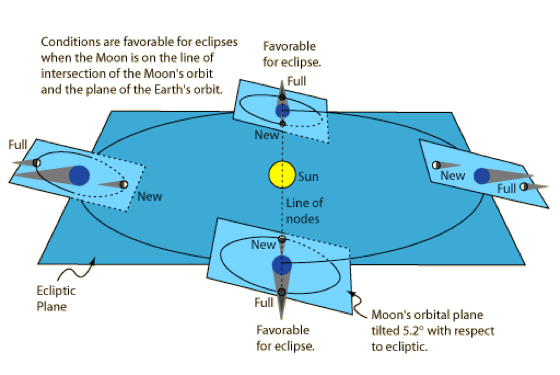Hello from your friendly Cisco resident astronomer!
On 2017 Aug 21, those in North American will experience a wonderful event called a Total Solar Eclipse:
However for the few who venture into the center-line, where totality will exist for about 2 minutes, they will see an amazing event:
The shadow will pass over the continental US for the first time since 1979:
Places to stay in the path of totality are hard to come by now. I, for example, planned and booked my viewing site (in the ID / WY border area) about 2 years ago. For those who plan to try and go into the centerline, I recommend this resource.
There is a handy online video guide to that above URL, showing the many capabilities of that resource:
[vimeo https://vimeo.com/192379357]
There is plenty to do for those who are not fortunate enough be in the path of totality. For example in San Jose, you will be able ti witness a deep partial eclipse:
In San Jose, the partial eclipse will begin about 9:01 Pacific Time:
After than the partial phases will grow less and less until they end around 11:38 Pacific Time:
Eye Safety
It is never safe to gaze long at the Sun. The back of your eyes do not have pain receptors, so you will not feel your retina being burned (and your eyesight permanently damaged) if you look at the Sun too long.
Here is some information from the American Astronomical Society’s Advice on Safe Solar-Eclipse Viewing:
- https://eclipse.aas.org/eye-safety
- https://eclipse.aas.org/eye-safety/eyewear-viewers
- https://eclipse.aas.org/eye-safety/iso-certification
- http://www.skyandtelescope.com/astronomy-news/aas-offers-updated-advice-for-safely-viewing-the-august-21st-solar-eclipse-across-america/
More Eye Safety
• The Sun is no more or less dangerous during an Eclipse
• It is never safe to look directly at the Sun except during a TOTAL SOLAR eclipse
• A partial or annular eclipse, even when the Sun is mostly covered …
To safely view the Sun:
• Must block 99.999% or more of the Visible light!
• Must block 99.99999% of UV and Infrared light!
• #14 Welder’s Glass <<—— • Standard #12 Arc Welder glass is NOT dark enough!!!
• “CE” Certified Eclipse Shades
Safe indirect viewing of the Sun
• Pinhole projection
Make a Projector to Safely See a Solar Eclipse:
Make a Box Pinhole Projector to Safely Watch a Solar Eclipse
Look for where the sun peaks through leaves/branches of a tree:
During the deeper parts of the partial phases, the normal solar “dots” will become thin crescents.
Poke some SMALL holes in cardboard and project a message.
Other resources:
- On average: 1 Total Eclipse every 19 months
- On average: 1 Annular Eclipse every 15 months
- On average: 1 Partial Eclipse every 14 months
Total Solar Eclipses: 2001-2025
Some places get lucky:
Why don’t we get a Solar Eclipse every month?
- Moon’s orbit is inclined 5.2º with respect to Earth’s orbit about the Sun
- Need a new Moon AND the Moon to be within 1/4º of the the Earth solar path
You need to be in the Right place at the Right Time:
- The typical total eclipse shadow is about 160 km (100 miles) wide
- Covers less than 1% of the surface
Eclipse photography:
My advice for those who will see a TOTAL solar eclipse for the first time:
- General Suggestion: Don’t waste time and attention taking photos
- Don’t photograph your first few eclipses: Use your eyes and mind instead!
Here is a good resources on Eclipse Apps & Software.
Best wishes for clear skies and fun/safe eclipse viewing!
chongo (Landon Curt Noll) /\oo/\
[Ed. note: Main graphic image on home page source comes from the Eclipse 2017.org site.]






